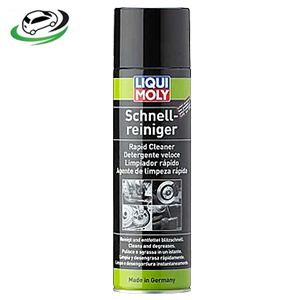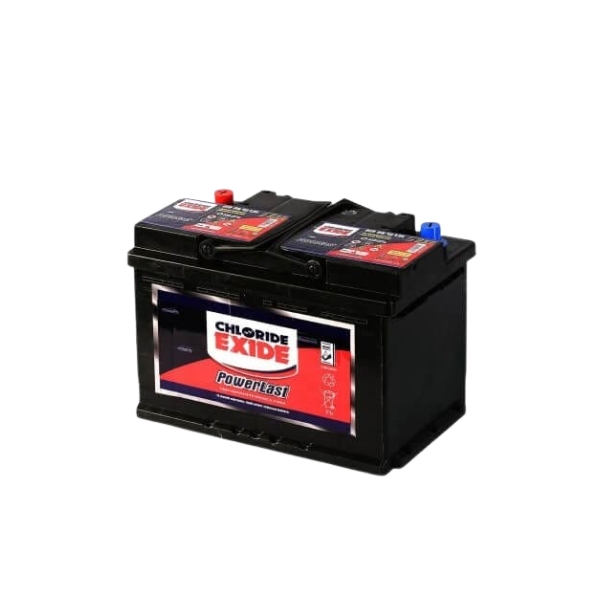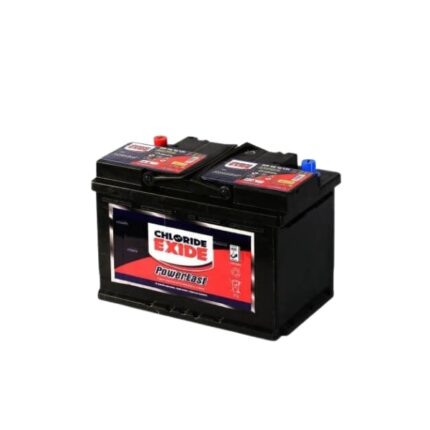Get Chloride Exide Powerlast DIN 66 in Kenya
The Chloride Exide Powerlast DIN 66 is a high-performance, heavy-duty lead-acid battery designed for reliable power delivery and long-lasting service in a wide range of automotive applications. Built using advanced battery manufacturing technology, it offers exceptional cranking power, dependable starting performance, and resilience under demanding operating conditions. This battery is engineered to deliver not only reliable starts but also the consistent energy supply required for modern electrical systems.
1. Battery Type and Technology
The Powerlast DIN 66 is a sealed, maintenance-free lead-acid battery based on proven calcium-calcium (Ca-Ca) grid technology. This design reduces water loss, eliminates the need for electrolyte top-ups under normal operating conditions, and increases corrosion resistance.
Its advanced grid structure ensures optimal electrical conductivity, providing higher starting currents and efficient charge acceptance. The internal components are carefully arranged to minimize internal resistance, thus improving performance during cold starts and under heavy load conditions.
2. Nominal Specifications
-
Nominal Voltage: 12V
-
Capacity (Ah): 66Ah
-
Cold Cranking Amps (CCA): Typically in the range of 550–600A (varies slightly depending on production batch)
-
Reserve Capacity: Approximately 110–120 minutes, offering extended electrical support if the charging system is temporarily unavailable.
-
Case Size: DIN-standard dimensions for precise fitment in compatible battery trays.
-
Terminal Type: Standard European DIN terminals with robust, corrosion-resistant lead posts for secure cable connection.
These specifications provide a balance between power output and endurance, ensuring that the battery can handle frequent starts, support vehicle electronics, and recover quickly after discharge.
3. Construction Features
The Chloride Exide Powerlast DIN 66 incorporates several engineering enhancements designed to improve durability, safety, and power output:
a) Calcium-Calcium Alloy Grids
The positive and negative plates are manufactured from calcium alloy, which significantly reduces gassing and water loss. This prolongs the life of the battery and improves charge retention during periods of inactivity.
b) Robust Polypropylene Casing
The outer casing is made from high-strength polypropylene that is impact-resistant, vibration-resistant, and capable of withstanding extreme temperature variations. This protects internal components from physical damage and environmental stress.
c) Envelope Separators
Each plate is wrapped in microporous polyethylene envelope separators, which prevent short circuits caused by active material shedding while maintaining electrolyte flow for efficient chemical reactions.
d) High-Density Active Material
The active paste formulation on the battery plates is optimized for deep discharge recovery, high starting currents, and long cycle life.
e) Sealed Design with Safety Vents
The battery is sealed against spills under normal use, with integrated safety vents to release excess gas pressure and prevent internal damage.
4. Performance Characteristics
The Powerlast DIN 66 is built to provide consistent, dependable power under a variety of operating conditions:
-
High Cranking Power: The battery’s high CCA rating ensures confident starts even in cold weather, where oil thickens and engines require more starting power.
-
Excellent Charge Acceptance: Modern alternators, regenerative braking systems, and electronic control units benefit from the battery’s ability to accept charge quickly after high load usage.
-
Vibration Resistance: Designed to withstand constant vibrations from rough road surfaces, minimizing internal component wear.
-
Long Shelf Life: Thanks to low self-discharge rates, the battery retains charge well during storage or infrequent use.
-
Stable Voltage Output: Maintains steady voltage for sensitive electronics and auxiliary systems.
5. Applications
While the Chloride Exide Powerlast DIN 66 is versatile, it is particularly suited for vehicles and equipment that demand reliable cold-start capability and consistent power delivery. It performs well in:
-
Vehicles with multiple electronic systems and accessories.
-
Driving environments with frequent stop-start cycles.
-
Conditions where resistance to high heat or extreme cold is essential.
-
Applications that require sustained reserve capacity in case of alternator failure.
6. Advantages
a) Maintenance-Free Operation
No need to periodically top up electrolyte levels, reducing service time and cost.
b) Extended Service Life
Optimized plate design, corrosion-resistant grids, and superior manufacturing techniques extend operational life compared to standard lead-acid batteries.
c) Reliable in All Climates
The battery is designed to deliver stable performance in hot and cold environments, making it suitable for diverse geographic conditions.
d) Superior Safety
Built-in flame arrestors and sealed venting protect against accidental sparks and gas build-up.
e) High Value-to-Performance Ratio
It provides exceptional durability and consistent output, making it a cost-effective choice over its lifespan.
7. Handling, Installation, and Care
Proper handling and installation are essential to maximize the life of the Chloride Exide Powerlast DIN 66:
-
Installation: Ensure the battery is securely mounted to minimize vibration exposure. Check polarity before connecting cables to prevent damage.
-
Charging: Use a compatible 12V charger if recharging outside the vehicle. Avoid overcharging to prevent electrolyte breakdown.
-
Storage: Store in a cool, dry place away from direct sunlight. Fully charge before long-term storage to prevent sulfation.
-
Regular Checks: While maintenance-free, periodic visual inspection for corrosion on terminals and cleanliness is recommended.
8. Environmental Considerations
The Chloride Exide Powerlast DIN 66 is fully recyclable, with most of its components—lead, polypropylene casing, and electrolyte—being recoverable. Recycling reduces environmental impact and supports sustainable manufacturing practices. Used batteries should always be returned to authorized recycling centers or retailers to ensure safe disposal.
9. Technical Reliability
Each unit undergoes strict quality control and performance testing before leaving the factory. These tests ensure the battery meets or exceeds DIN specifications for:
-
Cold Cranking Performance (CCA)
-
Reserve Capacity
-
Charge Acceptance Rate
-
Vibration Endurance
-
High and Low Temperature Performance
Follow us on Facebook for more Parts.




